Mongols (ethnic Mongolian speakers) are descendants of the people unified by the great Inner Asian conqueror Genghis Khan before his death in 1227. Today Mongols live primarily in Mongolia, a country in East and Central Asia that borders Russia to the north and China to the east, south, and west. A large population of Mongols also live in the Inner Mongolia Autonomous Region of the People’s Republic of China, as well as in Xinjiang, the Tibetan plateau, and parts of Russia.
Who Are Mongols and Where Do They Live?
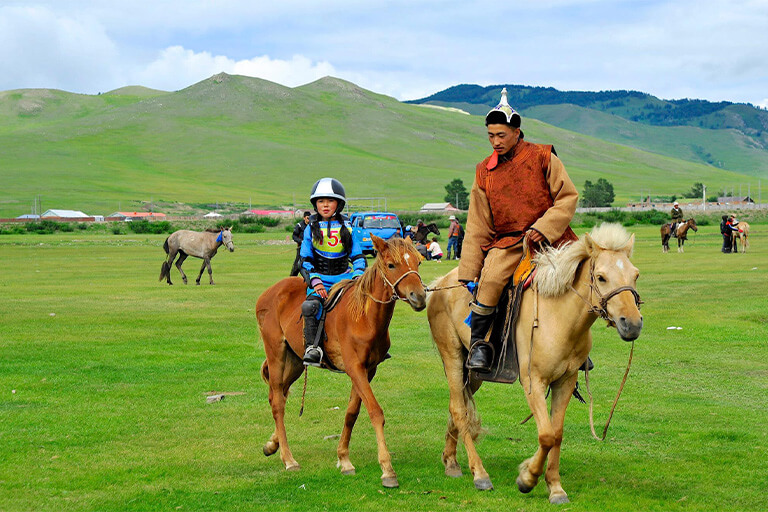
What Kind of Language is Mongolian?
Mongolian refers to a number of closely related languages and dialects. Mongolian, the official language of the independent nation of Mongolia, is properly called Khalkha Mongolian, after the four Khalkha provinces that were carved out of this region in the 17th century. Closely related dialects of Mongolian are spoken in the Inner Mongolian Autonomous Region of China, and more distantly related forms of Mongolian are spoken by the Buryats of Siberia and the Kalmyks of European Russia, Xinjiang, and Tibet. Despite their linguistic differences, speakers of all these forms of Mongolian view themselves as people of one ethnicity and culture, a view encouraged by their common use of traditional Mongolian script until the breakup of the Mongolian cultural world in the 20th century.
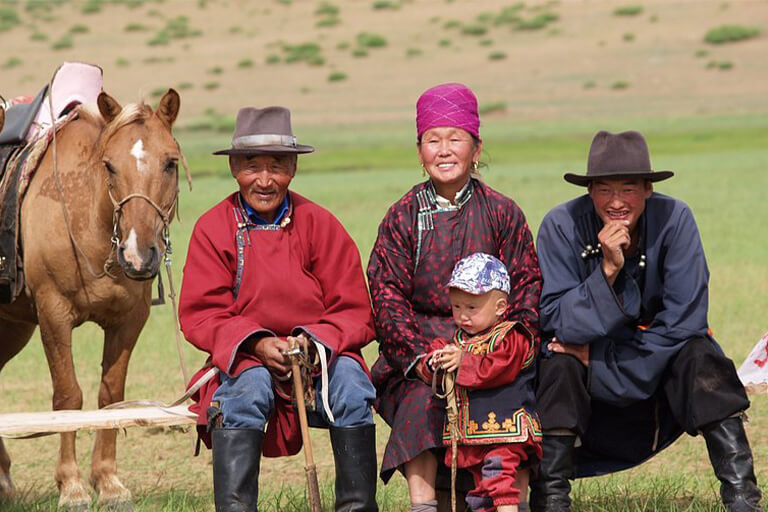
Some isolated Mongol languages are spoken in the Chinese provinces of Heilongjiang (NE China), Gansu and Qinghai (West Central China) and Xiaxiang (Western China). Mogholi is spoken in Afghanistan by the descendants of Mongols settled there during the Mongol Empire.
Most varieties of Mongolic languages share a number of important characteristics, such as an SOV (subject-object-verb) sentence order, agglutination (a linguistic process where complex words are formed by adding meaningful morphemes to word stems), and vowel harmony (where the vowel of the first syllable defines the sequence of rounded or unrounded, front or back or neutral character of the vowels of the rest of the word).
What Alphabet Do Mongols Use?
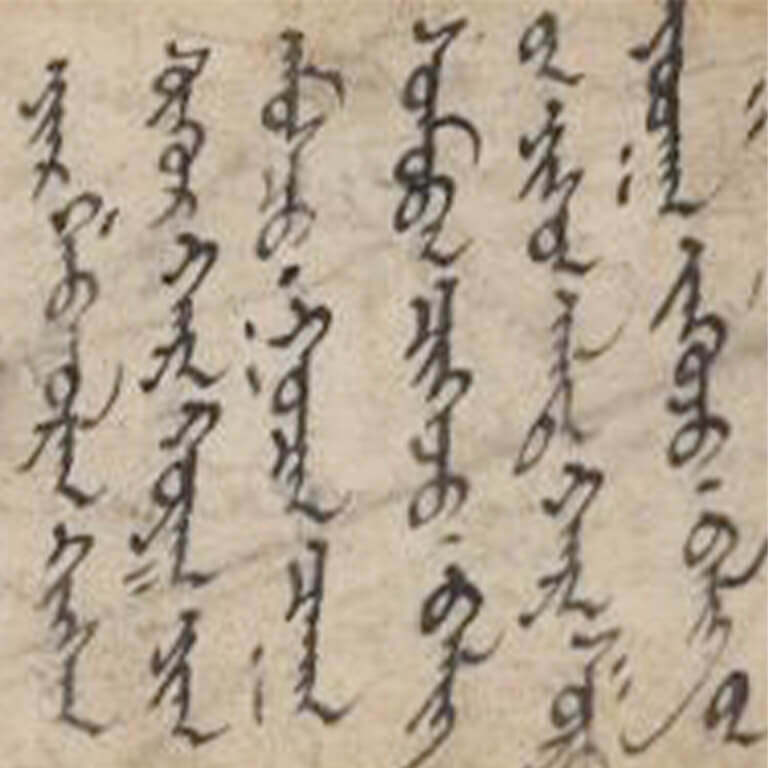
Throughout their history, Mongols have used a number of alphabets. From the beginning of the 13th century, Mongolian was written using the Uyghur script. Overtime, this was adapted into a vertical script, sometimes called classical or traditional Mongolian Script, and is the only script in the world written vertically and left to right. For a short time in the 1930s, Mongolian was written using a Latin based script; however, soon after the Russian Cyrillic script was adapted to write Khalkha Mongolian, which is still used to write Mongolian today. However, Mongols of the Inner Mongolia Autonomous Region of China still use the classical Mongolian Script with its centuries-old tradition of calligraphy. Additionally, a modified version of this script, known as Clear Script, has been used by some Mongols living in the Xinjiang Autonomous region of China.
What is Mongolian Culture Like?
Historically, Mongols are a nomadic people, herding livestock on the Mongolian plateau. Religiously, they were adherents first of shamanism and then of Buddhism. But like many other Central Asian cultures, Mongolia culture has been influenced by the cultures of Tibet, China, the Central Asian oases, and Russia throughout the recent centuries.
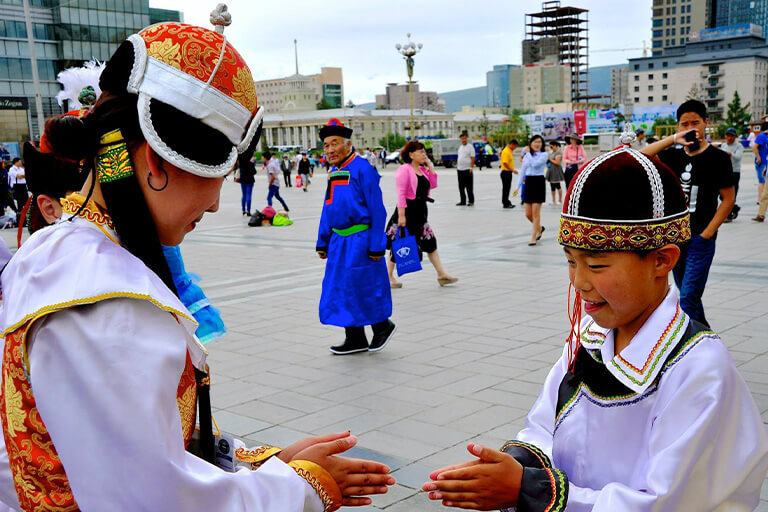
Mongolian culture has been derived from the traditional life of steppe herdsmen. The mainstays of Mongolian herding are horses, cattle, camels, sheep, and goats, which provide milk, meat, clothing, and even fuel for the hearth via dry animal droppings. To this day, many Mongolian families migrate seasonally three or four times a year with their herds to customarily assigned pastures.
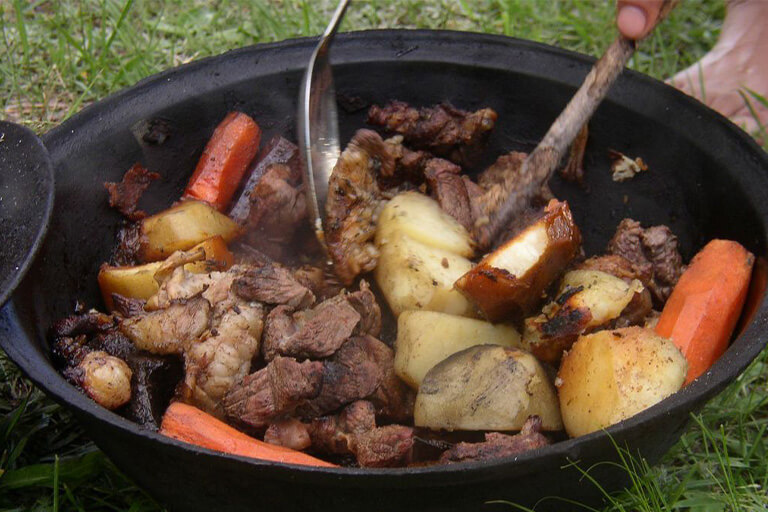
Traditional Mongolian society was strongly aristocratic and hierarchical, with an insistence on order and proper behavior. However many of these cultural practices were affected by the Soviet influences of the 20th century, including abolishing the Buddhist sangha (clergy) and nobility, eliminating “superstitious” and “feudal” customs, and by establishing universal education.
In 1924 Mongolia became one of the first “People’s Republics,” along with Tuva. Since then it has strongly encouraged industry (particularly mining) and farming to diversify and modernize the economy, along with prioritizing the country’s development and contributions of science, technology, and culture. Since the peaceful democratic revolution of 1990, Mongolia has established the only stable market democracy between Central Europe and Korea, and privatization and globalization have followed as matters of national policy.
Some Useful Phrases in Mongolian
Сайн байна уу? Миний нэр Жон.
[saɪn baɪn uː miˈniː ner ʤon]
/Sain baina* uu? Minii ner John./
Hi. My name is John.
Таны нэр хэн бэ?
[taˈniː ner χen be] /Tanii ner hen be?/
What is your name?
Сонин юу байна?
[soˈnin yuː baɪn] /Sonin yuu baina*?/
How are you doing?
Би чамд хайртай.
[bi ʧamd χaɪrˈtaɪ] /Bi chamd hairtai./
I love you.
Ямар сайхан морь вэ!
[jaˈmar saɪˈχan ˈmori ße] /Yammar saihan mori we!/
What a beautiful horse.
Бие засах газар хаана байна вэ?
[biˈje ʣaˈsaχ gaˈʣar χaan baɪn]
/Biye dzassahh gadzar haana baina we?/*
Where is the restroom?
Маш их баярлалаа.
[maʃ iχ baˌjarlaˈlaa] /Mash ihh bayarlalaa./
Thank you very much.
Сайн байна.
[saɪn baɪn] /Sain baina*./
It is good.
Баяртай.
[ˌbayarˈtaɪ] /Bayartai./
Good-bye.
baina*, xaana* : the short vowel at the end of a word is not pronuonced. So these are pronounced like ‘bain’ and ‘haan
Five Reasons Why You Should Learn More About Mongolians and Their Language
- Mongolian is spoken by over 7 million people, not just in Mongolia, but also in some parts of China (Inner Mongolia and Xinjiang Uyghur Autonomous Region) and Russia (Buryatia and Kalmykia) as well.
- As a member of the Altaic language family, Mongolian shares structural similarities to Turkic and Tungusic language groups. The Mongolian vocabulary is rich in early Turkic, Sanskrit, Tibetan, and Chinese elements that reflect the country’s nomadic, Buddhist, and Asian heritage. Mongolian continues to adopt words from Russian and English, but very much retains its own distinctive character.
- The Mongol Empire (1206-1368) was history’s largest land-based empire of all time. This empire and its successor states had enormous influence on subsequent world history.
- Since the 1990s, Mongolia has been transitioning to a market economy and is predicted to be the fastest growing economy in the region. With its extensive land and mineral deposits, Mongolia attracts foreign investments and businesses.
- While you don’t need to know Mongolian to order at a Mongolian BBQ restaurant (because it isn’t actually Mongolian!), most bigger cities do have Mongolian restaurants, and you can impress your friends by ordering your buuz in Mongolian!

